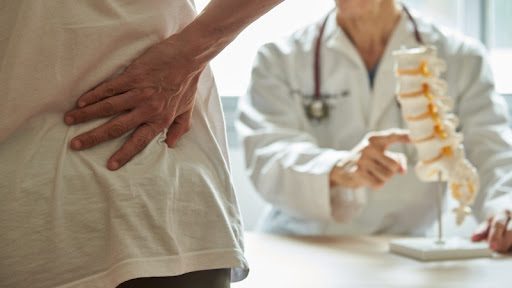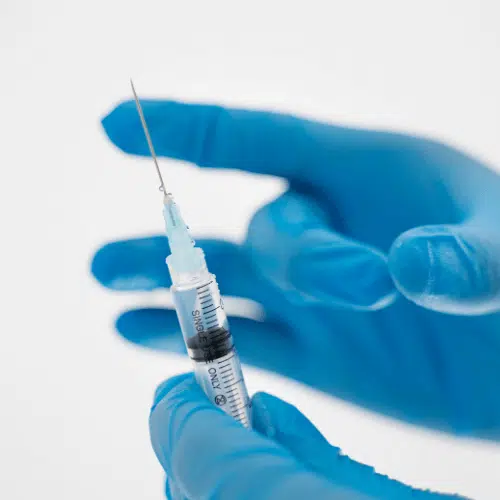Tips for Recuperation After Surgical Procedure with the Best Spine Surgeons in St Louis MO
Tips for Recuperation After Surgical Procedure with the Best Spine Surgeons in St Louis MO
Blog Article
Recognizing the Usual Spinal Column Troubles That May Require Surgical Treatment
Problems such as herniated discs, spine constriction, and degenerative disc illness not just impact mobility yet can also dramatically hinder quality of life. As we check out the various problems and their implications, it ends up being evident that the decision-making procedure surrounding medical treatment is diverse and complex, elevating essential concerns concerning timing, risks, and end results.
Herniated Discs
Herniated discs are a prevalent spine problem, typically arising from age-related degeneration or severe injury. best spine surgeons in st louis mo. This problem occurs when the soft inner product of a back disc protrudes with its external layer, potentially compressing nearby nerves. The resulting signs and symptoms can include localized discomfort, numbness, tingling, or weak point in the arm or legs, depending on the affected area of the back
Medical diagnosis generally includes a thorough case history and physical exam, typically supplemented by imaging researches such as MRI or CT scans. These diagnostic tools permit healthcare professionals to examine the level of the herniation and its impact on surrounding structures.
Therapy alternatives for herniated discs vary from conservative measures, such as physical therapy and drug, to even more intrusive procedures. Many clients discover relief via non-surgical approaches, which focus on discomfort management and bring back feature. When conservative treatments fall short to minimize signs and symptoms or when neurological deficiencies emerge, surgical intervention may be called for.
Surgical options, consisting of discectomy or back blend, objective to soothe stress on the afflicted nerves and recover spine security. The choice to pursue surgical treatment is generally made after cautious factor to consider of the person's general health and wellness, severity of symptoms, and feedback to previous treatments.
Spinal Constriction

Symptoms usually aggravate with activities that call for extended standing or walking, bring about a problem called neurogenic claudication. Medical diagnosis generally involves imaging studies, such as MRI or CT checks, which help visualize the level of constriction and determine influenced areas.
Therapy options for spine constriction might begin cautiously, utilizing physical therapy, pain management methods, and way of living alterations. Surgical treatments, such as decompression laminectomy or back fusion, aim to alleviate pressure on the spine cord and nerves, consequently relieving discomfort and restoring function.
Scoliosis
A considerable number of individuals are affected by scoliosis, a condition identified by an uncommon side curvature of the back (best spine surgeons in st louis mo). This curvature can create in numerous types, including idiopathic scoliosis, which emerges without a well-known reason, or as an outcome of neuromuscular conditions, congenital variables, or degenerative conditions. The extent of scoliosis can vary substantially, varying from moderate curves that might not call for therapy to severe instances that can cause discomfort, respiratory system concerns, and reduced high quality of life
Diagnosis is typically made through checkups and imaging researches such as X-rays, which aid analyze the degree of curvature and its development. Treatment choices are determined based upon the severity of the curvature, age of the individual, and potential for development. Non-surgical treatments include monitoring, bracing, and physical treatment. Surgical treatment might become needed for people with significant curvature that is aggravating, or for those experiencing debilitating signs and symptoms. Surgical options typically entail spinal combination, which intends to fix the curvature and support the spine. Early diagnosis and treatment are essential to handling scoliosis properly and reducing prospective difficulties.

Degenerative Disc Illness

DDD is often an outcome of the natural aging procedure, however image source factors such as genes, way of life, and repetitive pressure can accelerate its start. Individuals often report local pain in the lower back or neck, which might radiate to various other areas, such as the arm or legs. In severe instances, nerve compression can lead to neurological symptoms, consisting of tingling, tingling, or weak point.
While conventional treatments, such as physical therapy and discomfort administration, can reduce symptoms for lots of individuals, some might require medical treatment. Surgical options, such as back fusion or fabricated disc navigate to this website replacement, objective to recover security and minimize discomfort by dealing with the underlying issues triggered by DDD. A comprehensive evaluation by a back expert is important to figure out the most suitable therapy strategy.
Fractured Spine
Broken vertebrae stand for a significant worry in spine health and wellness, often resulting from injury, osteoporosis, or other degenerative problems (best spine surgeons in st louis mo). These cracks can result in extreme pain, loss of wheelchair, and potential problems such as back instability or neurological deficits. The mechanism of injury usually entails either direct trauma, such as falls or car mishaps, or the progressive weakening of bones as a result of problems like weakening of bones
Medical diagnosis is usually validated via imaging researches, consisting of X-rays, CT scans, or MRIs, which disclose the level and sort of crack. Therapy choices differ depending upon the fracture's seriousness and the client's general health. Conservative management might entail discomfort relief, rest, and physical therapy; nonetheless, medical treatment may be required for displaced fractures, those creating back instability, or when traditional procedures stop working.
Surgical methods can include vertebroplasty or kyphoplasty, treatments intended at supporting the vertebra and easing pain. In extra serious situations, spinal blend might be indicated to restore architectural stability. Ideal and prompt view website intervention is important in ensuring optimum healing and reducing long-term difficulties related to broken vertebrae.

Verdict
In summary, common back issues such as herniated discs, back stenosis, scoliosis, degenerative disc disease, and broken vertebrae can significantly harm high quality of life and demand surgical treatment. While conventional therapies may give relief oftentimes, relentless or serious signs and symptoms typically necessitate surgical alternatives to restore function and alleviate pain. Prompt diagnosis and proper management are important to enhance client end results and help with recuperation in individuals impacted by these devastating problems.
Spine constriction is a problem characterized by the narrowing of the back canal, which can lead to compression of the spinal cord and nerve roots. Surgical treatments, such as decompression laminectomy or spinal fusion, goal to soothe pressure on the spine cable and nerves, therefore reducing pain and recovering feature. Surgical options, such as spinal combination or man-made disc substitute, purpose to restore stability and minimize discomfort by resolving the underlying concerns caused by DDD. Conservative management may include discomfort alleviation, remainder, and physical treatment; however, surgical intervention may be required for displaced fractures, those triggering spine instability, or when conventional procedures fall short.
In recap, typical spinal column issues such as herniated discs, spine stenosis, scoliosis, degenerative disc illness, and fractured vertebrae can considerably hinder high quality of life and require medical treatment.
Report this page